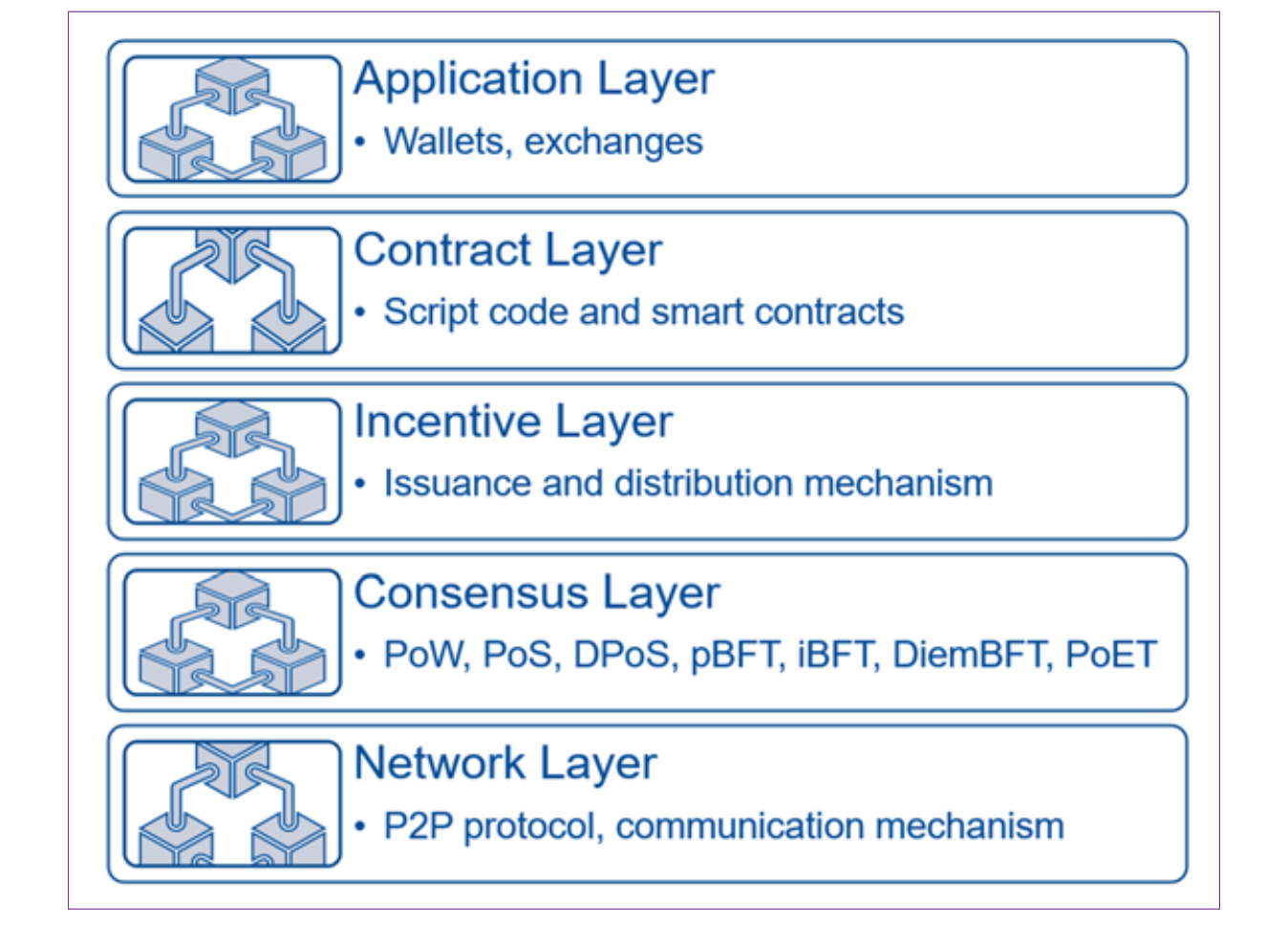Understanding Blockchain Consensus Mechanisms
 Lolu Bolarinwa
Lolu Bolarinwa
Blockchain is a distributed ledger system that allows multiple parties to maintain a copy of an ever-growing list of records, secured using cryptography. For it to be distributed, all the parties involved need to reach an agreement, a Consensus. How? By using a consensus mechanism.
Blockchain technology relies on consensus mechanisms to establish reliability and trust in Blockchain systems. It is one of the cogs needed for blockchain to function.
Why is Consensus Important?
Consensus mechanism is at the core foundation of all cryptocurrency blockchains. It is the critical infrastructure that enables the security of a blockchain application. To properly understand the role of a consensus mechanism, let's first understand how it works.
How blockchain Consensus works: A block can be said to have reached consensus when all the nodes in the network agree on a single version of the truth, without relying on a central authority or intermediary. It involves the following steps:
Transaction Initiation: The first step begins when a user initiates a transaction, which is then broadcast to all nodes in the network. This kickstarts the process of validation.
Block Formation: Transactions that require validation are grouped together into a block. Grouping a bunch of transactions together saves time. The more transactions a block can accommodate, the faster it is that transactions get settled. This varies for different blockchains and can determine how fast the blockchain is.
Block Validation: The network then uses a consensus mechanism to scrutinize through the transactions and come to an agreement.
Consensus mechanisms are not in the control of any one entity but rather can be a mathematical algorithm as is the case with Bitcoin or checks and balances as with Ethereum. So the decision of what gets approved is ironclad.
Block Addition: After validation is complete and a consensus is made and satisfactory, the new block is added to the blockchain. The state of the blockchain is then distributed to all nodes on the network. the approach of having the block state as a distributed ledger solves the double-spending problem.
Confirmation: As more blocks are added to the chain, the transaction gets more confirmation. This process becomes "immutable" and secure, so future manipulation is impossible.
Types of Consensus Mechanisms
There has been a variety of different consensus mechanism algorithms developed in the past decade. Each one taking a creative spin towards achieving the same goal of preventing double-spending in a distributed ledger system and eliminating focal points where a blockchain system can potentially be attacked. Some of the most popular mechanisms are:
Proof-of-Work (PoW)
Proof-of-Work is regarded as one of the earliest consensus algorithms developed and certainly the most popular. It works by using computational power to solve encrypted mathematical hash puzzles in a process known as mining. Upon completion, the computer node responsible for solving the puzzle first gets rewarded with a "block reward" for the work done and earns the right to add a new block to the blockchain. The block reward is what contains the cryptocurrency for the blockchain. This serves as an incentive to participate more in the network.
The difficulty of the "mathematical puzzle" (hash) is adjusted automatically based on the total computing power on the network to ensure that blocks are added at a consistent rate.
Proof-of-work is known to be the most secure and reliable consensus mechanism available for blockchains right now. There are two major vulnerabilities that a PoW consensus mechanism can be attacked; using the 51% attack or the Sybil Attack, both of which are mitigated by simply having a decentralized network that keeps any one party from forming a monopolistic control over the system.
Pros of PoW:
It features the highest level of security available for a consensus mechanism.
A lot of the moving parts in a PoW system are automated and do not require maintenance.
Cons of PoW:
While Proof-of-Work is highly secure, it is also energy-intensive. This has led to concerns over its environmental impact and energy consumption.
PoW can be slow when compared to other consensus mechanisms, but great innovation has been made to ensure quicker transaction speeds, like using Layer 2 solutions and also the use of rollups to handle batch transactions.
There is a high barrier to entry for running a blockchain node which is needed for decentralization of the network. This often requires special hardware for mining such as specially made Application Specific Integrated Circuits ASIC which are powerful custom-made mining computers as the name suggests.
There are many Blockchains that utilize Proof-of-work. Some of them include; Bitcoin, Monero, Ethereum Classic, Litecoin, Kadena, Dogecoi, etc.

Proof-of-Stake (PoS)
This consensus mechanism was the second one to be developed after Proof-of-work for Bitcoin was well established. Proof-of-stake is a secure, less energy-intensive and computationally efficient method of implementing a cryptographic settlement mechanism.
In PoS the fundamental model works on collateralization. Validation is achieved by mandating that potential validators deposit valuable capital in the form of the designated network cryptocurrency to serve as a guarantee for good behavior. This acts as collateral that something of value can be destroyed if the validator acts dishonestly.
The capital deposited on the network is called Stake and the staked capital is secured using a smart contract on the network. Although not everyone who stakes gets to be selected as a validator, however, the higher the value of your collateral, the higher the chances of being chosen to be a validator.
The validator is responsible for checking that new blocks that are propagated over the network are valid and secure. They also have the duty of occasionally creating and propagating new blocks themselves.
Pros of PoS
Energy Efficiency: PoS is more energy-efficient than Proof of Work (PoW) as it doesn’t require miners to solve complex mathematical problems, thus saving a significant amount of energy.
Low Barrier to Entry: PoS does not require specialized computer hardware to participate as a validator.
Speed: Cryptocurrencies that use PoS are faster and take less time to reach transaction finality.
Upgradeability: PoS can be easily upgraded for implementing new scaling solutions compared to the previous proof-of-work architecture.
Cons of PoS
PoS may incentivize hoarding so that they can guarantee getting selected to be a validator.
Hoarding may result in PoS being susceptible to centralization.
Proof-of-stake (PoS) is what underlies Ethereum's consensus mechanism. Ethereum switched on its proof-of-stake mechanism in September 2022 in a historic event known as The Merge.
Other cryptocurrencies that use PoS include; Polygon, Near, Avalanche, Aptos, Binance, Cardano, Polkadot, Algorand, Celo, etc.
Other Types of Consensus Mechanisms
Delegated Proof-of-Stake (DPoS)
Proof-of-Authority (PoA)
Byzantine Fault Tolerance PoS (BFT)
Proof-of-History (PoH)
Proof-of-Burn (PoB)
Proof-of-Elapsed-Time (PoET)
Proof-of-Activity (PoAc)
Proof-of-Identity (PoI)
Proof-of-Capacity(PoC)
Off-chain Reporting
Conslusion
The choice of which consensus mechanism is used to build a blockchain is largely determined by the function the blockchain is going to serve and what characteristics the creator intends for the blockchain to have.
Subscribe to my newsletter
Read articles from Lolu Bolarinwa directly inside your inbox. Subscribe to the newsletter, and don't miss out.
Written by
